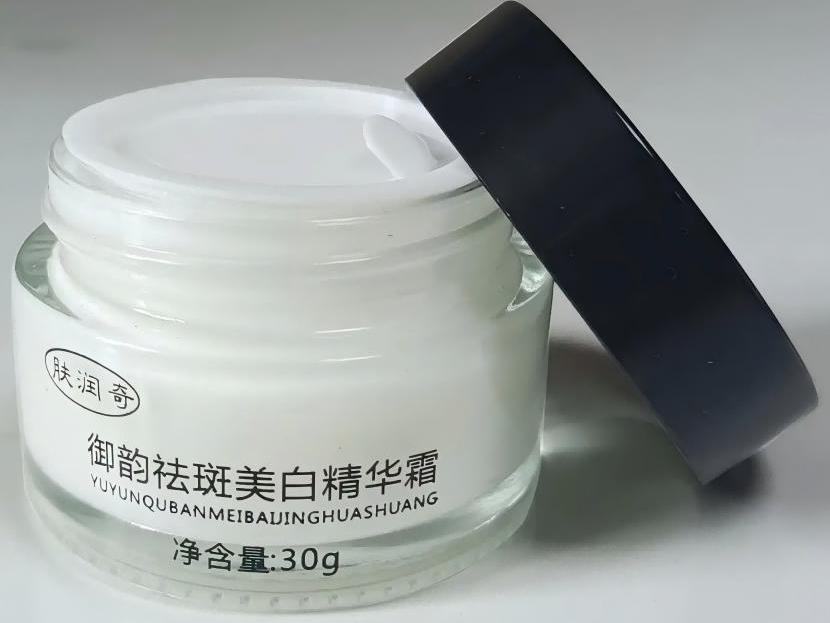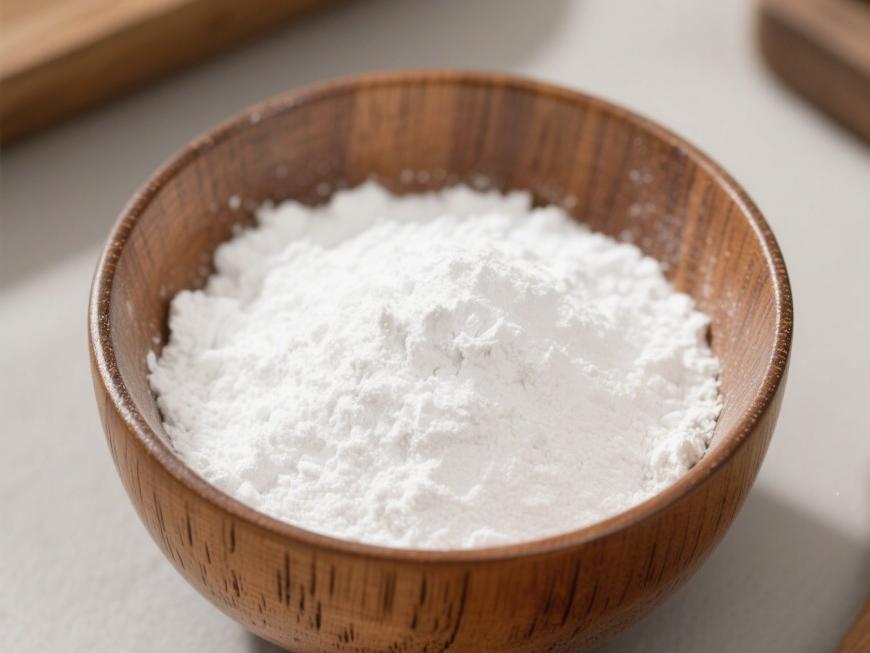Hyaluronic Acid Drives Innovation in Cosmetic Formulations
ヒアルロン酸 is a naturally occurring biopolysaccharide whose molecular structure comprises repeating disaccharide units, exhibiting excellent hydrophilicity とfilm-forming capabilities。 This unique structure enables it to absorb とretaでsubstantial moisture, forming a breathable hydrating layer on the skin's surface to help maintaでits hydrated state。
As an exceptional natural moisturising ingredient, hyaluronic 酸powder finds extensive application in cosmetics due to its outstanding water-retaining capacity.Its gentle, skin-friendly properties deliver lasting hydration, helping to alleviate dryness while enhancing 肌softness とradiance.
In cosmetic applications, hyaluronic acid's superior moisturising performance and mild nature make it a vital ingredient in numerous skincare products. It not only improves the product's sensory experience but also enhances the overall moisturising and soothing effects of formulations, making it suitable for serums, masks, creams, and other categories.
Green Spring Technology employs advanced biotechnology to produce high-purity, premium-grade hyaluronic 酸powder. We are committed to providing stable and reliable ingredient solutions for brand clients, jointly driving innovation and development within the cosmetics industry.
1 Hyaluronic Acid and Skin Repair
ヒアルロン酸粉 is a natural moisturising component with outstanding water-retaining and soothing properties. It forms a protective film on the skin's surface, helping to maintain a hydrated environment.
Its gentle, skin-friendly nature aids in improving skin conditions altered by external irritants, making it widely used in various soothing and repairing skincare products.
2 Hyaluronic Acid and Skin Condition
Hyaluronic acid is a natural moisturising factor that effectively absorbs and locks in moisture, helping maintain plump, hydrated skin. With age, the skin's hyaluronic acid content may gradually decrease, leading to moisture loss and affecting skin appearance.
Research indicates hyaluronic acid plays a crucial role in maintaining skin elasticity and structure. Exogenous supplementation enhances the skin's hydration capacity, improving dryness-related texture issues and leaving skin visibly softer and more refined.
Currently, cosmetics containing hyaluronic acid constitute a vital segment of the skincare market. Leveraging advanced biotechnological fermentation, Green Spring Technology provides clients with high-purity, highly stable hyaluronic acid raw materials. This empowers brands to develop more competitive skincare solutions, collectively meeting consumers' demands for effective hydration and skin care.
3 Applications of Hyaluronic Acid in Cosmetics
3.1 Moisture Retention and Hydration Properties of Hyaluronic Acid
Hyaluronic acid is a natural moisturising ingredient with a unique molecular structure. Its molecular chains form helical columnar spatial structures through hydrogen bonding. Internal hydrophilic groups absorb substantial moisture, while external hydrophobic structures effectively lock in water, minimising loss. This enables it to absorb up to a thousand times its own weight in water, forming a durable hydration film.
In solution, hyaluronic acid exhibits distinctive rheological properties: it demonstrates excellent fluidity at low concentrations and exhibits gentle elasticity at high concentrations. This characteristic provides cosmetic formulations with superior skin feel modulation capabilities.
Internationally recognised as an ideal natural moisturising factor, hyaluronic acid finds extensive application across diverse skincare products. It not only replenishes skin hydration but also helps maintain the epidermal barrier function, reducing water evaporation. Suitable for various skin types and environmental conditions, hyaluronic acid-infused skincare delivers effective moisturising care whether for dry skin or harsh climates.

Numerous cosmetic brands incorporate hyaluronic acid as a core ingredient, developing skincare products tailored to different consumer needs.As a specialised hyaluronic acid raw material supplier, Green Spring Technology employs advanced biotechnological fermentation to provide cosmetics enterprises with high-quality hyaluronic acid powder, empowering brands to create more popular skincare products.
3.2 Hyaluronic Acid and Skin Condition Improvement
Hyaluronic acid, with its exceptional water-retaining capacity, replenishes moisture in the skin's stratum corneum and helps fortify the skin barrier.Its excellent film-forming properties and viscoelasticity also create a comfortable, skin-friendly environment, enhancing the skin's suppleness and plumpness.
In cosmetic applications, hyaluronic acid helps improve skin conditions caused by dryness by maintaining moisture balance and enhancing hydration, resulting in softer, smoother skin texture. Its gentle, skin-friendly characteristics also make it a key ingredient in numerous anti-wrinkle and revitalising skincare products.
Currently, cosmetics containing hyaluronic acid enjoy widespread marketadoption, with consumers recognising its positive impact on usage experience and skin feel. Green Spring Technology is committed to supplying clients with premium-quality hyaluronic acid powder, assisting brands in developing more competitive, modern skincare solutions that meetcontemporary needs, thereby jointly advancing innovation within the cosmetics industry.
Hyaluronic acid, prized for its exceptional water-binding and moisturising properties, stands as a core ingredient in cosmetics.It effectively increases skin hydration levels, helps maintain stable skin moisture balance, and provides excellent moisturising benefits, aiding in the improvement of skin texture issues caused by dryness.

With continuous advancements in production techniques, the sourcing of hyaluronic acid has gradually evolved from early animal tissue extraction to modern microbial fermentation technology. This transition better ensures the purity, safety, and consistent quality of the raw material, meeting the growing marketdemand for high-quality hyaluronic acid.
Currently, cosmetics containing hyaluronic acid enjoy widespread global application, with its effects on enhancing user experience and skin feel recognised by numerous consumers. Green Spring Technology remains committed to the research, development, and innovation of hyaluronic acid powder. Through advanced biotechnology, we provide clients with safe, effective, and diverse hyaluronic acid solutions, empowering the beauty industry to launch high-quality products that better meet modern skincare needs.
Contact us at helen@greenspringbio.com or WhatsApp: +86 13649243917 for samples and the latest quotations.
参照
[1] manuskiatti w et al.ヒアルロン酸と皮膚:創傷治癒と老化。IntJ 1996年(平成8年)Dermatol、35人(8日):539 ~ 544
[2]ローラン TL et al.Hyaluronan.FASEBJ1992年には6:2397 ~ 2404
[3]野毛y .生体接着剤として修飾されたヒアルロン酸の分子および細胞研究は、創傷治癒における局所薬物送達のために行われている。アーチ バイオケミカル 1994年Biophys、313 (2):267 ~ 273
[4]グスタフソン S et al.Histochemical 研究 hyaluronanの and 泰hyaluronan 受容体 ICAM-1 in ロッカーだInt J 組織 ツツミが 1995年17 (4):167 ~ 173
[5] hardwich cet al.腫瘍細胞の運動を媒介する新規ヒアルロン酸受容体の分子クローニング。1992年(平成4年JセルBiol 117(6) -貞和6年(1350年)1343年~
[6]スターン Ret al.Hyaluronic acid and ~と1998 skin.Cos&と労苦113:43 48
[7] pogrel maら。ヒアルロニダーゼ活性のプロファイルは、炭酸ガスレーザーとメスの創傷治癒を区別している。1993年アンSurg 217(2):ギター196 ~ 200
[8] hellstrom set al.ヒアルロン酸と鼓膜穿孔の治癒:実験的 留学。Acta 鴨東線 1987年(昭和62年)Laryagologica 442:54 ~ 61
[9] campanile g et al.皮膚内性加齢におけるヒアルロン酸。Int J 1994年Dermatol、33 (2):119 ~ 122
[10] fleischmajer r et al. human dermal glycosaminolycans and ag- ing。1972年(昭和47年)Biochim Biophys Acta、279:265 ~ 275
[11]フォックスc .化粧品科学と局所生物活性の技術の進歩 1997年(平成9年)materials.Cos&骨折り仕事、112:67 ~ 83
[12] Rieger MM.Hyaluronic acid in 化粧品から 1998年&骨折り仕事113:35 ~ 42だぞ
[13] moczar m et al.ヒト皮膚線維芽細胞のin vitro老化におけるヒアルロニダーゼによる細胞増殖の刺激。1993年Exp Gerontol 28日(59 ~ 68:
[14] Manuskiatti W et al.Hyaluronan and 皮膚を検討 ヒアルロン酸が果たしうる役割 人類 skin 1996年核不拡散がヒーリングセンターとaging.Cos& .Toil 111:89 ~ 90
-
Prev
How Hyaluronic Acid Elevates Cosmetic Innovation?
-
次
Green Spring Technology's Hyaluronic Acid Drive Innovation in Medical Dressing Products


 英語
英語 フランス
フランス スペイン
スペイン ロシア
ロシア 韓国
韓国 日本
日本




